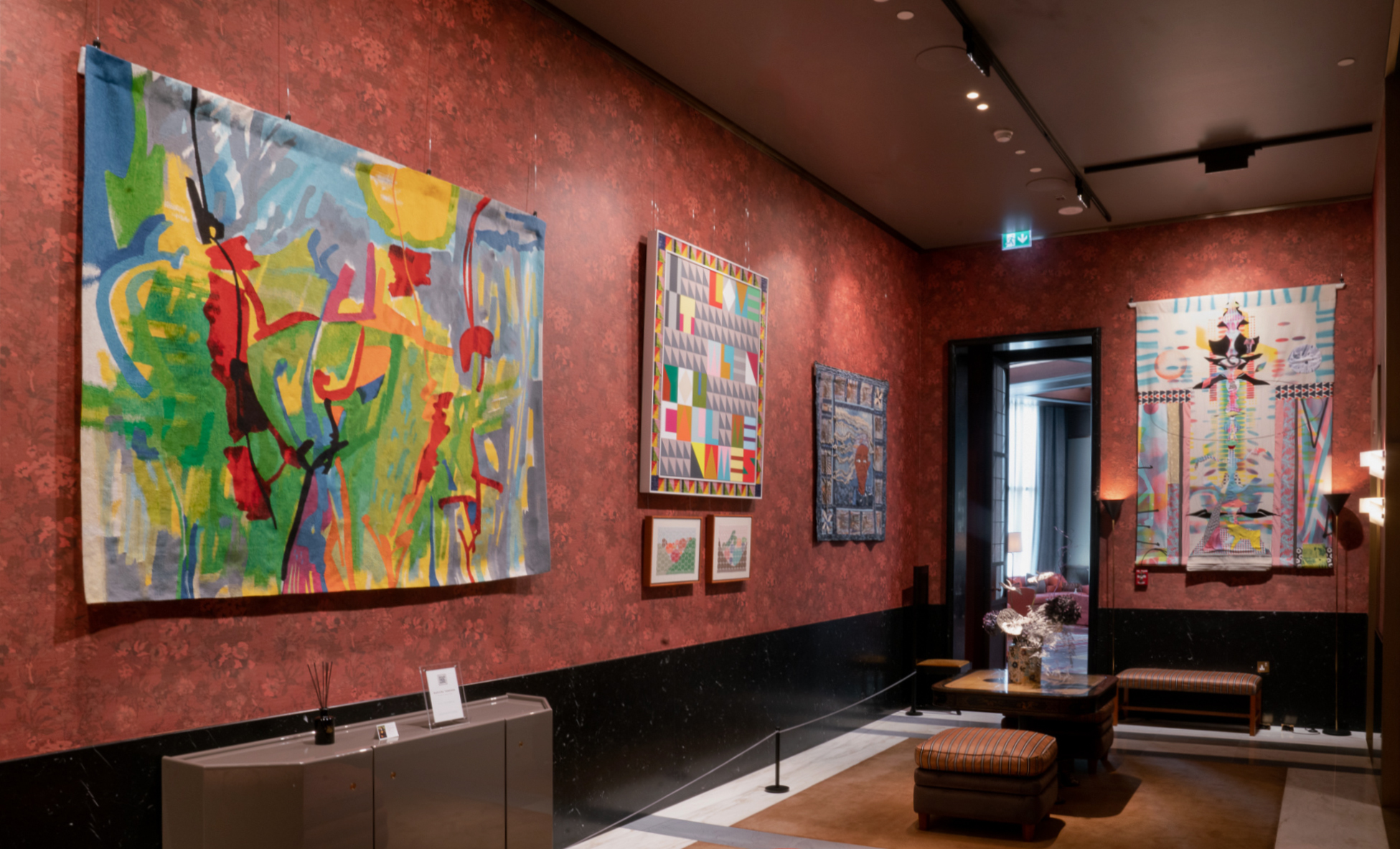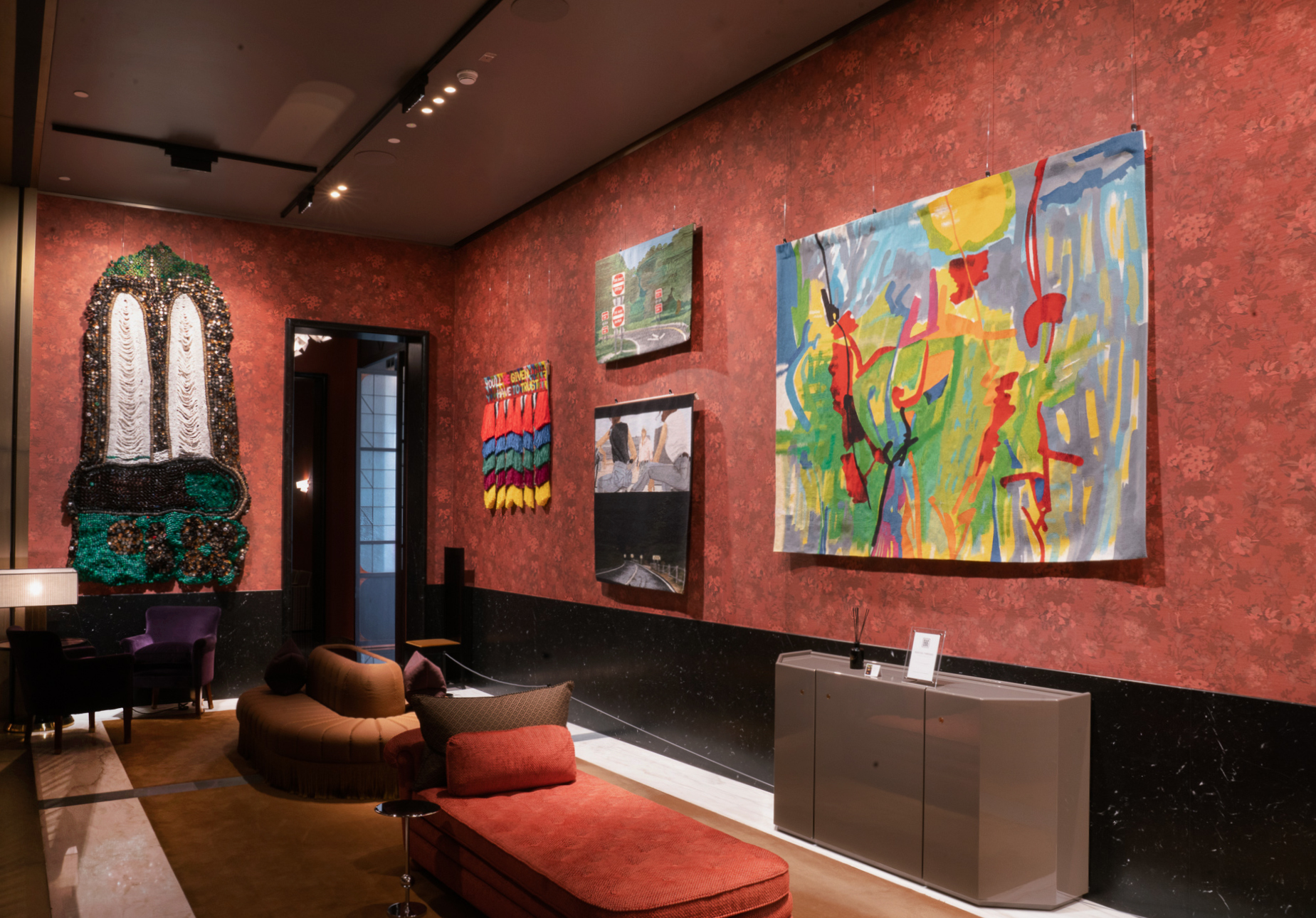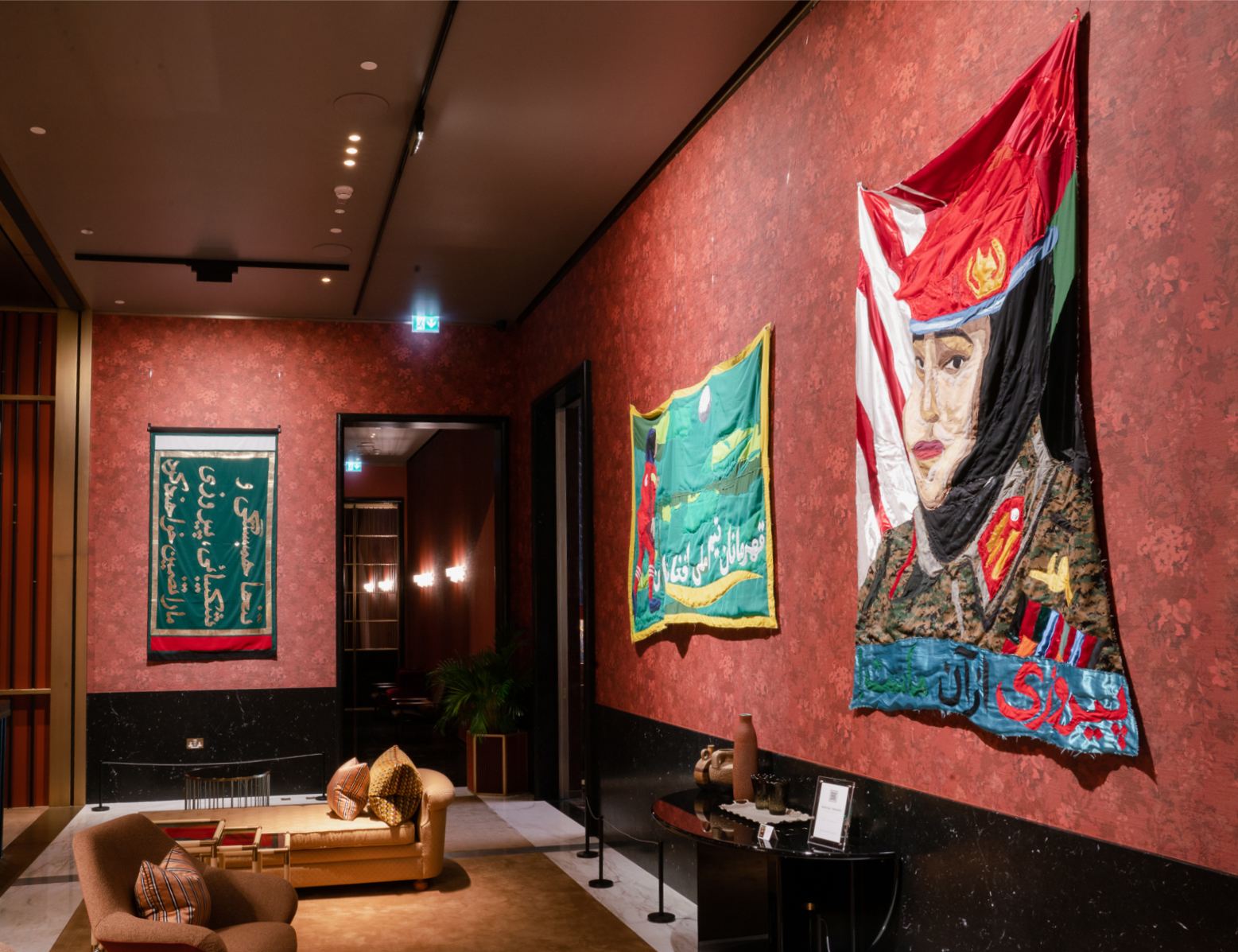Radical Threads
— The Arts Club, Dubai
Installation view: Radical Threads, The Arts Club, Dubai. Image: The Arts Club, Dubai.

Tap to view slideshow
Textiles have become a new language in today’s art world, drawing from a radical re-thinking of ideas around gender, ethnicity, limitations and stereotyping in the world at large.
Radical Threads challenges the historical dominance of painting and sculpture in ‘high art’, reclaiming the visual language of threads that has typically been associated with craft, ‘ethnic’ and ‘feminine’ work. Whilst each artist uses textiles for their own unique reasons and ideas, all pointedly subvert tradition, responding to current times and the history and politics in the art that went before.
Kamrooz Aram (b. 1978, Shiraz, Iran) focuses on the notion of ornament and design, as he strives to reinforce their significance within the art historical canon in his work. Incorporating both eastern and western influences, his work seemingly elevates the importance of ornament, design and architecture to that of painting, while simultaneously drawing a parallel between these art forms.
Dana Awartani’s (b. 1987, Jeddah, Saudi Arabia) oeuvre looks to the revival of traditional geometry as she draws on the philosophical and religious narratives of geometric elements in Islamic art. Similarly, Rana Begum (b. 1977, Sylhet, Bangladesh) is inspired by the repetitive, geometric patterns of Islamic art and architecture.
Shaikha Al Mazrou (b. 1988, Dubai, UAE), Fahd Burki (b. 1981, Lahore, Pakistan) and Amba Sayal-Bennett (b. 1991, London, UK) all work sculpturally. At the heart of Shaikha Al Mazrou’s sculptural experimentations lies her fascination with the materiality in art. Employing mass-produced materials to add three-dimensionality, her vibrant geometric compositions draw on the tactility of the medium, as well as on the notions of tension, weight, and space that they occupy. Burki’s predominantly blank, insular spaces are elevated through symbols, grids and intervals, mimicking the cold neutrality of a digital image, insisting on visual ambiguity. Additionally, Sayal-Bennett focuses on methods of making and the compositional possibilities of simple geometries and found objects in her practice. Lastly, Maryam Hoseini’s (b. 1988, Tehran, Iran) abstract work draws on the themes of identity, gender, physical space, and the politics of narrative.

